The Stages of Change Model is a popular model that has been used for decades to help people understand how they can change their behavior. It is made up of six stages, and it’s about time you learned what those stages are!
Contents
Stages Of Change Model
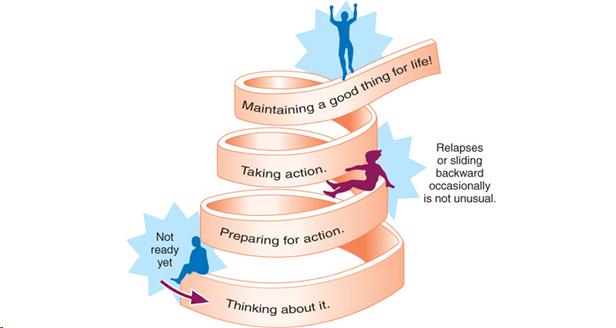
The theory behind this model is that when a person changes their behavior, they go through stages. It makes sense—if you have been smoking for years and then decides to quit, there will likely be some thinking involved before the actual quitting happens.
When people are in the pre-contemplation or contemplation stage of change, they aren’t aware that they need to change their behavior. However, when individuals are in the action stage, they have made a commitment and an attempt has been made to take steps towards changing their behavior.
People may relapse back into pre-contemplation or contemplation at certain points before staying abstinent for good. This is why it’s important to know what the different stages of change are so that you can be there for your loved ones and help them through the process.
Who Gave This Model?
The Stages of Change Model was developed by James Prochaska and Carlo Di Clemente. The two researchers were interested in how people changed their behavior, especially concerning cigarette smoking.
They found that there are different stages involved when it comes to quitting smoking, as well as other types of behaviors like drug use or drinking too much alcohol.
How Do the Stages of Change Model Work?
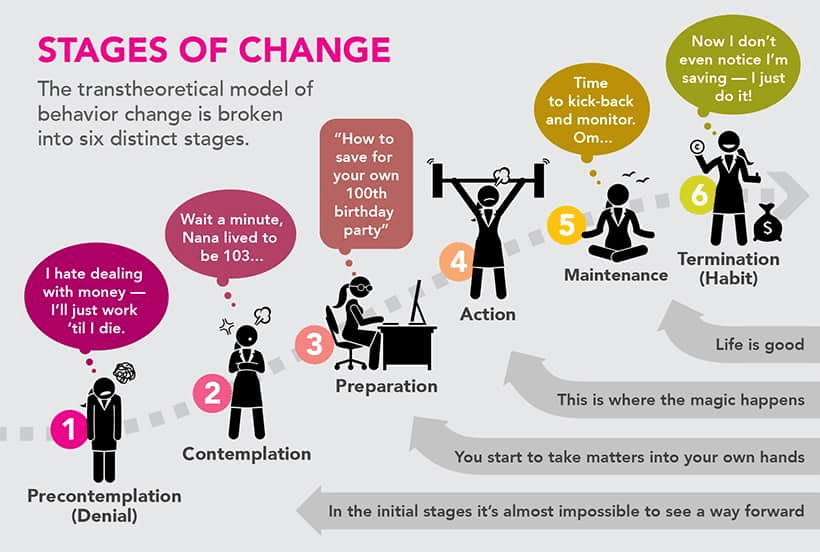
Now that you know what the six stages of change are, let’s take a look at each one in more detail!
Precontemplation
This is the stage where people don’t think they need to change their behavior. In the case of quitting smoking, for example, someone in this stage may not realize that smoking is bad for their health.
Contemplation
In contemplation, people are starting to become aware of the need to change their behavior but they haven’t taken any steps towards it yet. They may be thinking about quitting smoking or changing another unhealthy habit.
They are at the start of this stage, but they know that something needs to change. Like, they might have already thought about quitting smoking, for example. And now they are not sure whether or not to take action on their thoughts.
Preparation
This is where people attempt to change their behavior before backing out again. They may have tried quitting smoking before, for example.
However, they are aware that they need to change and might be considering it at this point. But there is still a lack of commitment on their part. So, they haven’t quit it yet but know that something needs to happen to become healthier or happier.
Action
At the action stage, people are committed to changing their behavior. They have taken steps towards this, but they may still need some encouragement to maintain the changes they’ve made for good.
Maintenance
When people have been abstinent from cigarettes or other substances for at least six months, you can consider them in the maintenance stage of change. This means that the changes they’ve made are permanent and they don’t need to worry about relapse.
Termination
This is the stage where people have successfully changed their behavior and maintained these changes for at least one year. They have reached their goal, which could be quitting smoking or any other healthy change.
How Can TTM Help?
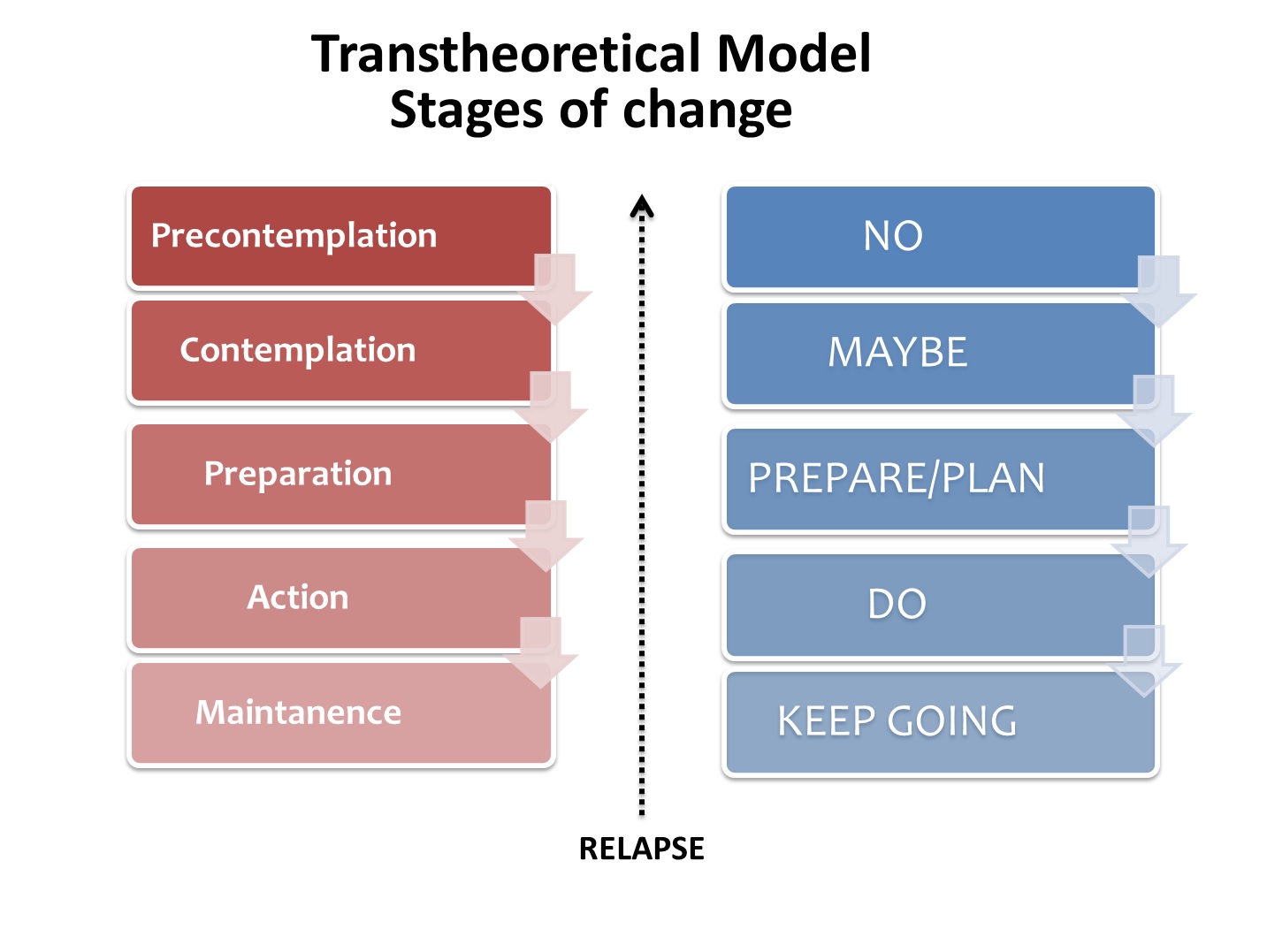 Now that you know what the different stages of change are, you may be wondering how you can help your loved ones. One way to do this is by using the TTM or Transtheoretical Model of Change.
Now that you know what the different stages of change are, you may be wondering how you can help your loved ones. One way to do this is by using the TTM or Transtheoretical Model of Change.
This model takes into account that people don’t always linearly move through the different stages. They might relapse back into pre-contemplation or contemplation at certain points before staying abstinent for good.
This is why it’s important to know what the different stages of change are so that you can be there for your loved ones and help them through the process.
What Are The Five Main Factors In TTM Model?
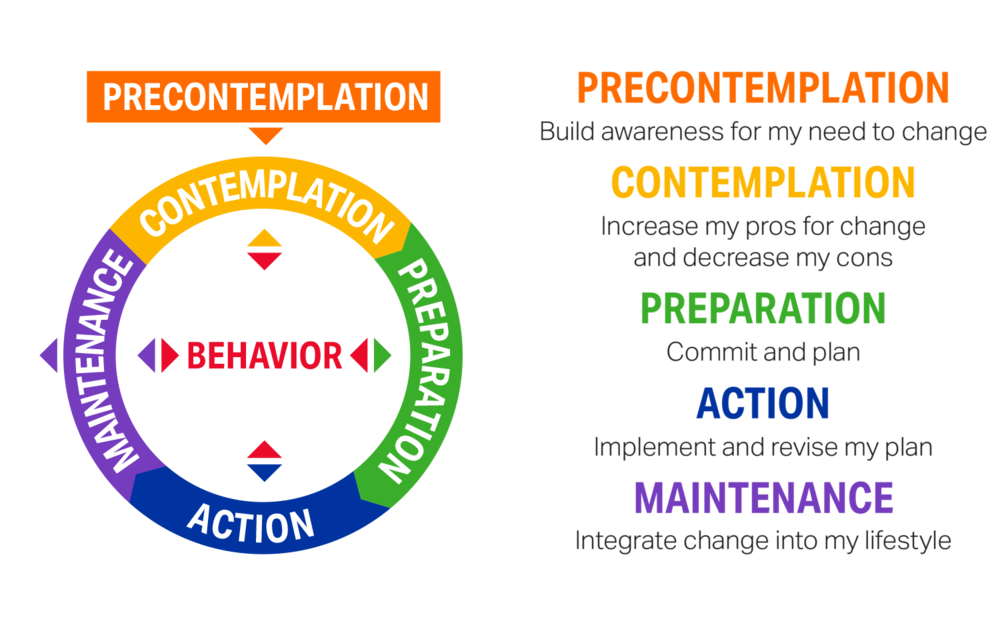
The TTM model looks at five main factors when it comes to changing behavior:
Consciousness-raising
This is where people become aware of the consequences of their behavior. They may see, for example, that smoking is bad for their health. It implies how soon people are willing to take action on their thoughts of changing their behavior.
Knowledge
What the different stages are and how they work – this could help them to better understand why it might take a long time before people make lasting changes to their behavior.
Beliefs
For instance, what quitting smoking or changing an unhealthy habit means for them on a personal level. This includes their fears and doubts about making a change.
Behaviors
That is how people have behaved in the past when trying to make changes. As well as what they are currently doing to try and quit or change their behavior.
Emotions
It means how people are feeling about the process of change, both good and bad. This includes things like stress, anxiety, and relief once they’ve decided to change.
Other Factors
Self-reevaluation
People in this stage start to question their old beliefs about themselves and how they relate to others. They might begin to think that they are capable of changing their behavior.
Environmental reevaluation
In this stage, people start to realize that their environment can positively influence them if they make certain changes. They might decide it’s time for someone else to take care of the house when both partners are smokers and decide on quitting smoking together.
Self-liberation
This is where motivation is high and people finally decide to quit smoking or change another unhealthy behavior.
Shocks
This is the stage where people are fully committed, but it doesn’t always last long. They could relapse at any point in time if they don’t maintain their changes for good. The TTM model helps you understand these different stages so that you can help your loved ones through the process.
NOTE: The model can help people to understand why they might be struggling with changing their behavior and what they can do to overcome these challenges. It can also help therapists to better understand their patients and how best to support them.
Psychotherapists On TTM
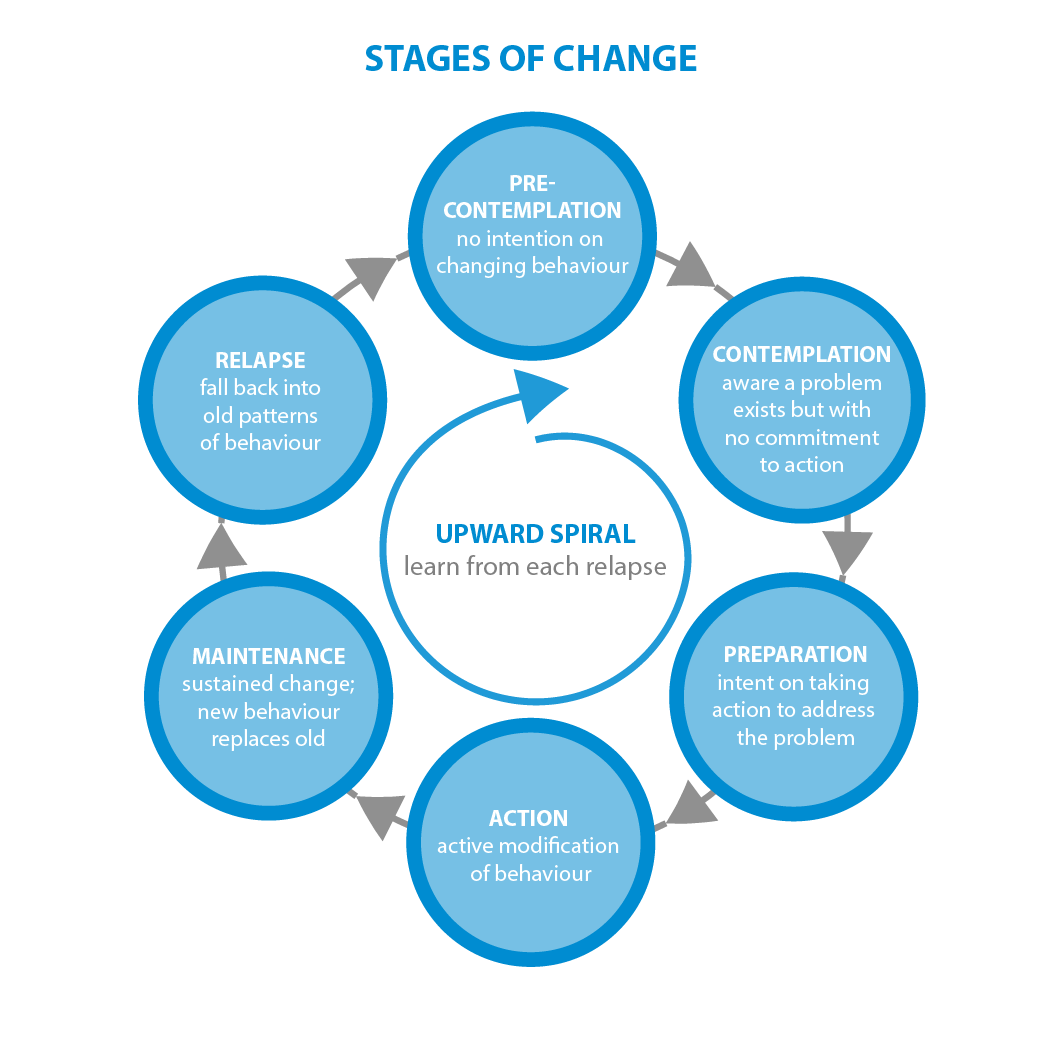
The Transtheoretical Model of Change is widely used by therapists all over the world. This is because it takes into account that people don’t always linearly move through the different stages.
They might relapse back into pre-contemplation or contemplation at certain points before staying abstinent for good.
This is why it’s important to know what the different stages of change are so that you can be there for your loved ones and help them through the process.
How Can Psychotherapists Use The TTM Model?
The TTM model can be used in a number of ways by psychotherapists.
They can use it to help them understand their patients better and why they might be struggling with making changes. It can also help therapists to develop interventions that will support their patients in making lasting changes.
Case Study
One psychotherapist who has taken the Transtheoretical Model and used it in her work is Dr. James O. Prochaska.
Her book, “Changing For Good” looks at how the model can be used to help people make changes in their lives.
She has also done extensive research into different stages of change and how they impact people’s behavior.
Conclusion
The five main factors in the TTM model are consciousness, knowledge, beliefs, behaviors, and emotions. It looks at how people are willing to take action on their thoughts of changing their behavior.
The Stages of Change Model has been proven useful in helping people quit smoking and other unhealthy habits for good. It can be applied not only to individuals but also to groups that need the motivation to change their behavior (like smokers).
The model can help people to understand why they might be struggling with changing their behavior and what they can do to overcome these challenges. It can also help therapists to better understand their patients and how best to support them. The Transtheoretical Model of Change is widely used by therapists all over the world because it’s one of the most effective tools out there.
If you are looking for affordable Online Counseling MantraCare can help: Book a trial therapy session


